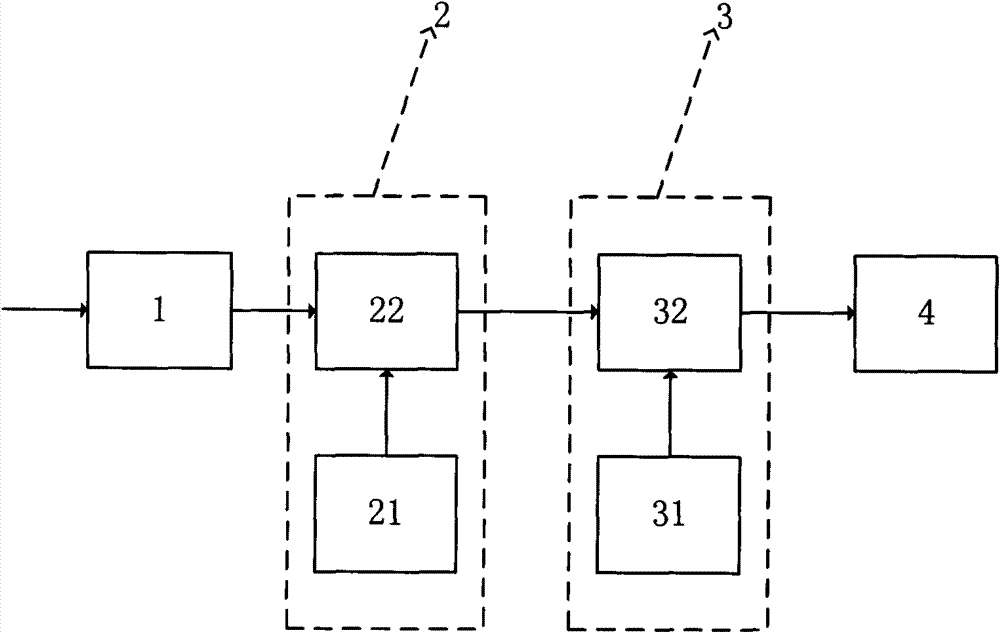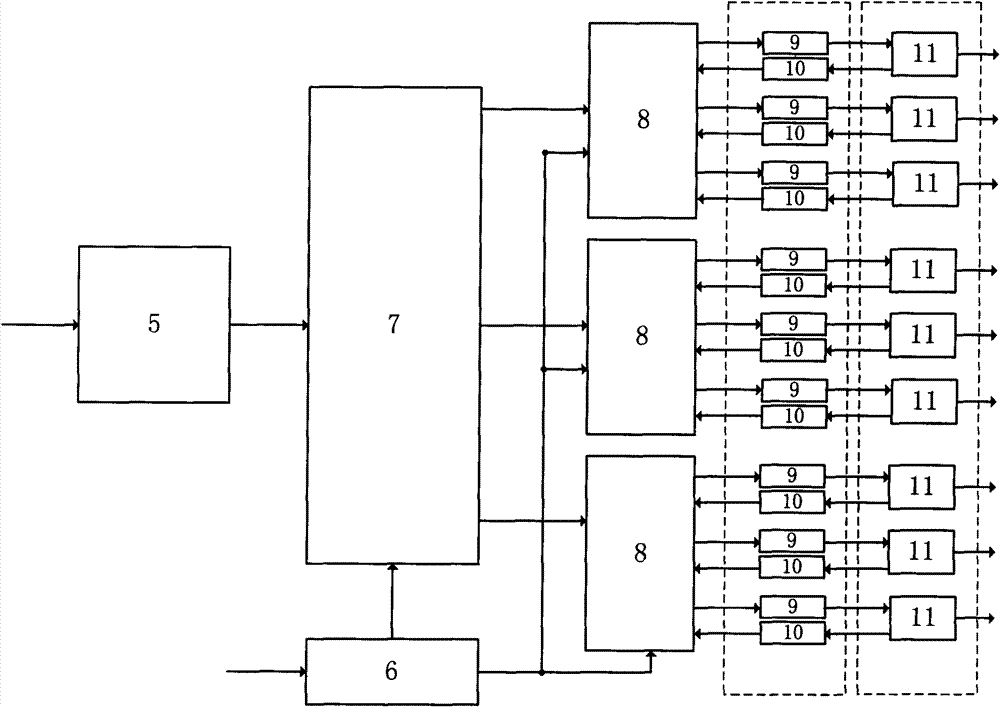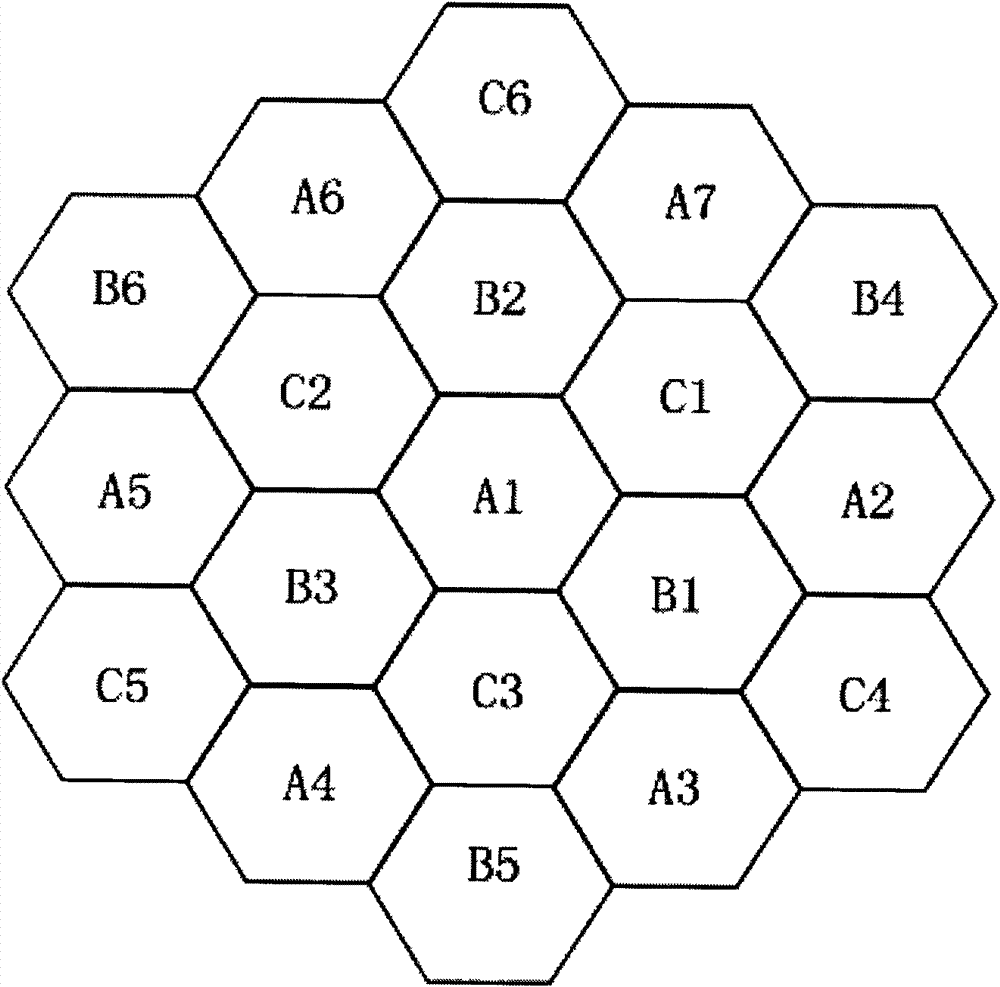Cell same-frequency networking system combining interleave division multiple access (IDMA) and overlapped code division multiple access (OVCDMA) and method thereof
A technology of IDMA and co-frequency networking, applied in transmission systems, digital transmission systems, baseband system components, etc., can solve problems such as inability to completely eliminate inter-cell interference, avoid performance disadvantages, eliminate interference, overcome The effect of sparse codewords
- Summary
- Abstract
- Description
- Claims
- Application Information
AI Technical Summary
Problems solved by technology
Method used
Image
Examples
Embodiment 1
[0025] Example 1 of the present invention Figure 1-2 As shown, it consists of a transmitting end and a receiving end. The transmitting end is composed of a channel coding and modulation module 1, an IDMA module 2, an OvCDMA module 3, and a radio frequency transmitting module 4, which are connected in sequence. The IDMA module 2 includes an interleaving pattern generator 21 and an interleaving The OvCDMA module 3 includes an OvCDMA codeword generator 31 and an OvCDMA spreader 32; the receiving end includes a radio frequency receiving module 5, a channel estimator 6, an OvCDMA likelihood decoder 7, an IDMA signal estimator 8, an IDMA deinterleaving And channel decoding and demodulation module 11, including radio frequency receiving module 5, OvCDMA likelihood decoder 7, IDMA signal estimator 8, IDMA deinterleaver and interleaver group 9, 10 and channel The decoding and demodulation modules 11 are connected in sequence, and the channel estimator 6 is connected to the OvCDMA likel...
Embodiment 2
[0027] A method for transmitting information between the sending end and the receiving end of the above system, the steps are as follows:
[0028] (1) Transmitting end: the user signal is channel coded and modulated by the channel coding and modulation module 1 to obtain a modulated complex signal; the interleaving pattern generator 21 generates an interleaving pattern, and the modulated signal is interleaved by the interleaver 22 using the interleaving pattern to obtain an interleaving signal; The OvCDMA code word generator 31 generates OvCDMA address code words, and the interleaved signal is spread by the OvCDMA spreader 32 using the OvCDMA address code words to obtain the final transmitted signal chip; the transmitted signal chip is transmitted to the wireless channel through the radio frequency transmitter module 4 ;
[0029] (2) Receiving end: The radio frequency receiving module 5 obtains the received signal from the wireless channel, and through the down-conversion processin...
Embodiment 3
[0031] A method of co-frequency networking of OvCDMA+IDMA cells based on the 3-color principle through the above networking system, such as image 3 As shown, the steps are as follows:
[0032] (1) Three OvCDMA address codewords are generated by the OvCDMA codeword generator of the OvCDMA module, based on the three-color principle of graph theory, using three OvCDMA codes for heterogeneous cell networking; based on the coloring theorem of graph theory, three types are used Different colors distinguish adjacent cells, each cell is set to a regular hexagon, one of the cells is set to one color, and the six adjacent cells are set in alternate two colors to ensure that Adjacent cells obtain different OvCDMA codeword resources; at this time, the OvCDMA codeword reuse efficiency η OvCDMA =1 / 3, all cells are divided into 1 / η OvCDMA Group (color), each group is called a same-color cell group, which uses the same OvCDMA code word identification; assuming a wireless communication system wit...
PUM
 Login to View More
Login to View More Abstract
Description
Claims
Application Information
 Login to View More
Login to View More - R&D
- Intellectual Property
- Life Sciences
- Materials
- Tech Scout
- Unparalleled Data Quality
- Higher Quality Content
- 60% Fewer Hallucinations
Browse by: Latest US Patents, China's latest patents, Technical Efficacy Thesaurus, Application Domain, Technology Topic, Popular Technical Reports.
© 2025 PatSnap. All rights reserved.Legal|Privacy policy|Modern Slavery Act Transparency Statement|Sitemap|About US| Contact US: help@patsnap.com



